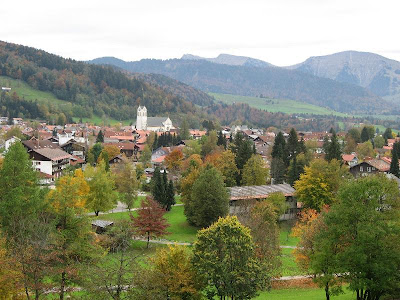Good Habits
I have always been a fan of Google Maps and in particular the ‘Street View’ option which is such a worthwhile tool for anyone intending to travel, especially to unfamiliar places. Even though the images on Street View are not ‘real-time’ the site can be of enormous assistance in checking out the location and images of the ‘street view’ of hotels, B & B’s and other accommodation options and allows the user to walk through the surrounding streets to find restaurants, shops, transport facilities and other places of interest.
Later this year I am planning to walk from Burgos to Leon in Spain, a section of the Camino de Santiago, an ancient pilgrimage trail across the northern part of the country. To my delight much of the Camino can be followed on street view, so as a lone traveller I can ‘preview’ the way in and out of towns and cities, work out the most appropriate route to my hotel/hostel and wander the nearby streets looking for the closest supermarket, restaurant, and on this blistering route, the nearest farmacia.

Oberstaufen, Germany © www.oberstaufen-urlaub.de
A click of the mouse enables the user to check out the worlds’ most beautiful and picturesque streets, such as the cobblestoned Shambles or Fossgate in York, both 21st century reminders of ancient England, or the restaurants and shops in Stockbridge High Street, the foodie centre of Hampshire. Orange Avenue in Coronado, CA, is said to be one of the most attractive streets in California. The medieval laneways of the picturesque Bavarian village of Oberstaufen in Germany and Sydney’s iconic Opera House and Harbour Bridge can all be closely investigated by the armchair explorer. Snow covered Whistler BC, is one of the most unusual street view pages as the Google camera was built into the top of a snowmobile. The Internet almost makes it possible to take a holiday without leaving home.

The Shambles, York. © www.historyofyork.org.uk
However, not for Spanish nun Sister María Jesús Galán, otherwise known as Sister Internet. After spending over 30 years in the Dominican Order, the 54 year old has now been asked to leave the convent because she spends too much time on the computer, mainly on Facebook, making friends. Sister María Jesús had over 600 friends at the time she was asked to leave. Some years ago the nun won a prestigious prize for digitalizing the medieval artworks in the 14th century convent of Santo Domingo el Real in Toledo in central Spain, making them available for the rest of the world to see and enjoy. With the number of vocations fast dwindling, it seems a crazy decision by her superiors, especially when cloistered nuns don’t often have the opportunity of face to face contact with people outside the convent walls. Through Facebook, Sister María Jesús was building a bridge to the world, communicating and encouraging response and comment. Father Dr Maximilian Krausgruber, a Cistercian monk from Austria puts it this way. ‘You can’t attract the masses with religion these days. In an era where the church is in such dire straits as it is here, opening up the cloisters also opens up a potential bridge to people and the possibility that they will once again seek dialogue with us’.

Sister María Jesús Galán ©Facebook
Sisters Julie Vieira and Maxine Kollasch of the Catholic religious order Servants of the Immaculate Heart of Mary (IHM) in Monroe, Michigan seem to agree with Father Max and run a much-viewed website www.anunslife.org. The website provides a forum for dialogue between the sisters and the world outside the convent, and boldly states, ‘Diversity of perspectives and opinions are always welcome here. We encourage dialogue even when it includes agreement or disagreement with us or with one another’. The site is linked to Facebook, Twitter, YouTube and Feedburner. The sisters blog, have a 24/7 chat room, an online gift shop (t-shirts and hoodies available) and run a live Podcast which is broadcast all over the globe. Used in such a way, the Internet provides an effective way of communicating and connecting with others on a social level, possibly even for nuns and monks who have taken a vow of silence.
Trish Clark is author of Good Night and God Bless: A Guide to Convent and Monastery Accommodation in Europe, Vols I and II, both published by Hidden Spring, an imprint of Paulist Press NJ. We've interviewed Trish about Good Night and God Bless. She writes a monthly column for Wandering Educators as the Travel with a Spiritual Twist Editor.
You can find her at http://goodnightandgodbless.com/




















